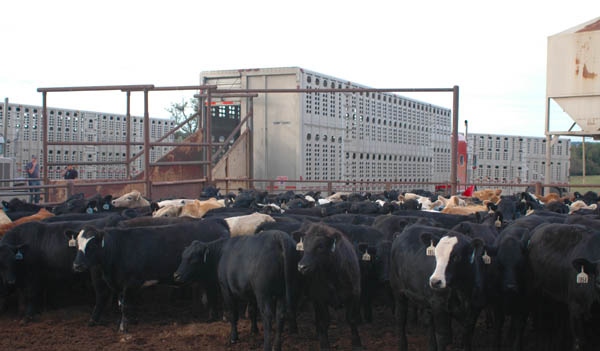Things are looking good on the demand front, both domestically and internationally, for 2012.
October 21, 2011

Anticipated high demand for U.S. beef in both the domestic and export markets bodes well for the industry into 2012.
“The market has largely been supported by exports,” says Justin Gleghorn, Brock Thompson Trading, Amarillo.
Gleghorn, speaking recently at the second annual Beef Financial Management Conference in Amarillo, said export demand increased by 43% from 2009 to 2010. Demand went up another 23% in 2011.
Part of the increase comes from a devalued dollar, Gleghorn says. He also notes that foreign buyers are taking end cuts, products that are not favored as much in the domestic market.
Domestic markets have also recovered, “especially in restaurant sales, including high-end restaurants. It’s bouncing back.”
He says future projections indicate more domestic demand for beef in 2011 and into 2012. “The combination of the domestic demand and export strength paint a good picture for the cattle market.”
U.S. cattlemen are producing more Choice cattle than they were a year ago, Gleghorn says. “Choice and Select are both appreciating at a fast pace.
“Also, we’re now marketing cattle that are 5-7 lbs. heavier. Better technology and better management are keys to pulling more performance out of cattle.”
He says the prolonged drought is affecting herd numbers as ranchers move animals into feedyards because of forage shortage and feed expense. He anticipates that every month in 2012 will see “substantially fewer cattle” than the same month in 2011.
The Southwest is not the only region that’s liquidating herds, however, but he says the trend for heifer slaughter is down though it spiked in the first and second quarter of 2011.
Discussing volatility in live cattle futures contracts, Gleghorn says outside influences have an impact. “We see a lot of money coming in that has nothing to do with cattle.” And, that situation has become more pronounced since credit position limits were increased after 1993. Those limits have increased significantly in recent years.
“That creates some volatility," Gleghorn says. It’s also a factor in the corn market.
He says U.S. cattlemen should develop risk management marketing strategies in a volatile market. Options, for instance, provide a little more flexibility than a straight hedge.
The Beef Financial Management Conference is sponsored by Great Plains Ag Credit; Commodity Risk Management; Brock Thompson Trading, LLC; Frost, PLLC; and CIH.
You May Also Like



